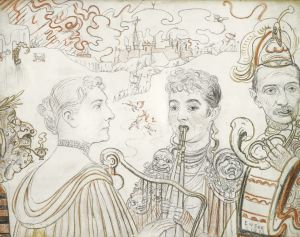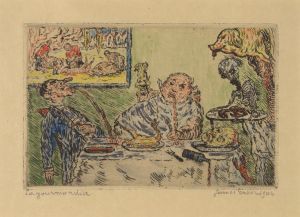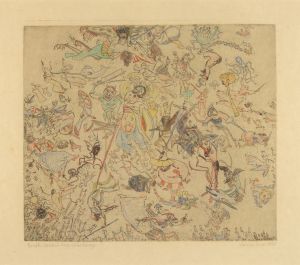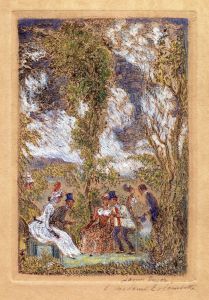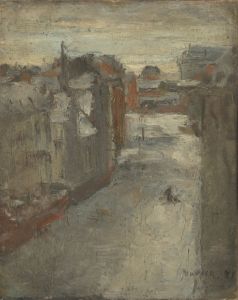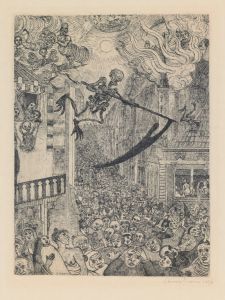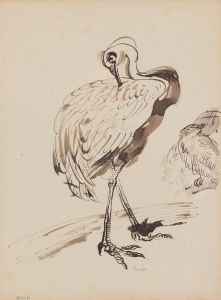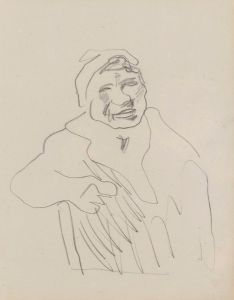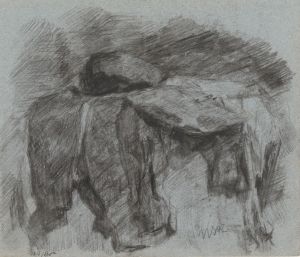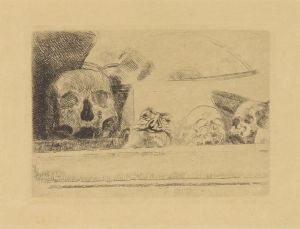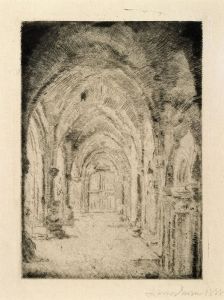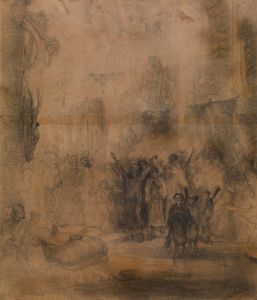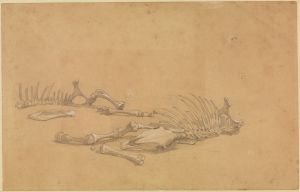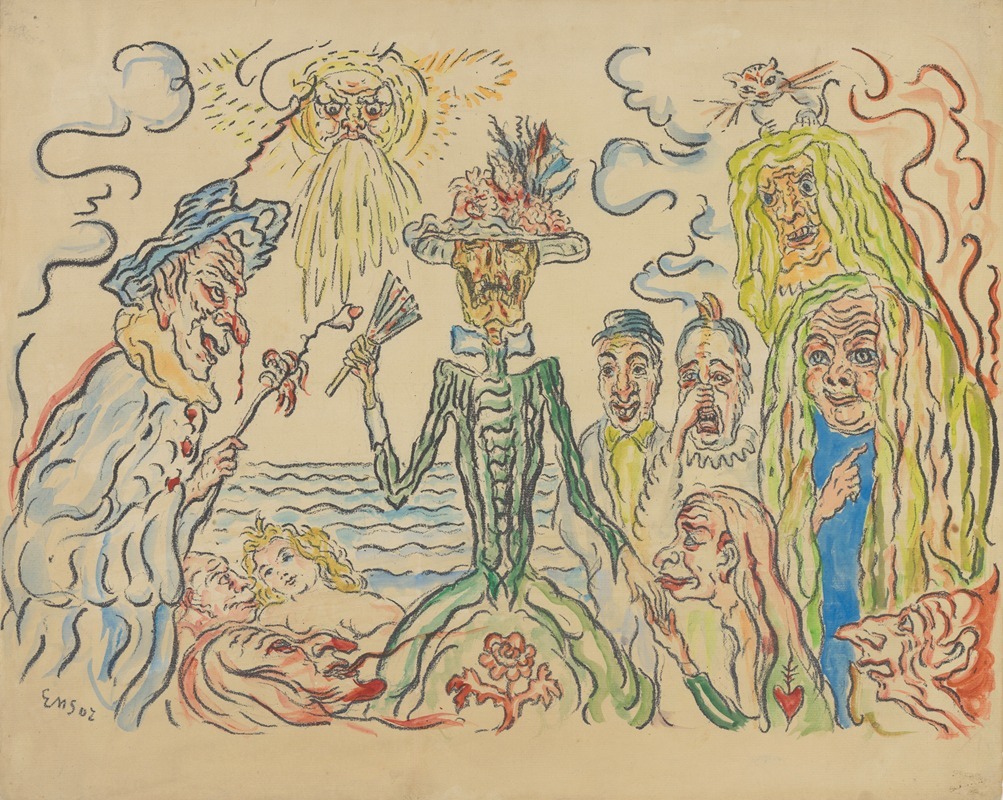
De kokette dood
A hand-painted replica of James Ensor’s masterpiece De kokette dood, meticulously crafted by professional artists to capture the true essence of the original. Each piece is created with museum-quality canvas and rare mineral pigments, carefully painted by experienced artists with delicate brushstrokes and rich, layered colors to perfectly recreate the texture of the original artwork. Unlike machine-printed reproductions, this hand-painted version brings the painting to life, infused with the artist’s emotions and skill in every stroke. Whether for personal collection or home decoration, it instantly elevates the artistic atmosphere of any space.
"De kokette dood" (The Coquettish Death) is a painting by the Belgian artist James Ensor, created in 1887. Ensor, born in 1860 in Ostend, Belgium, was a prominent figure in the Symbolist movement and is known for his unique and often macabre style. His works frequently explore themes of death, masks, and the grotesque, reflecting his fascination with the darker aspects of human existence.
"The Coquettish Death" exemplifies Ensor's distinctive approach to these themes. The painting depicts a skeletal figure, dressed in a lavish, brightly colored gown, adorned with a feathered hat and holding a fan. This figure of death is portrayed in a manner that is both eerie and whimsical, embodying the concept of death as a flirtatious and almost playful entity. The juxtaposition of the skeletal form with the elaborate attire creates a striking visual contrast, highlighting Ensor's ability to blend the macabre with the mundane.
Ensor's use of color in "The Coquettish Death" is particularly noteworthy. The vibrant hues of the figure's clothing stand out against the darker, more subdued background, drawing the viewer's attention to the central character. This use of color not only enhances the visual impact of the painting but also serves to underscore the surreal and fantastical nature of the scene.
The painting is also significant for its exploration of the theme of vanity. By dressing death in the trappings of a coquette, Ensor comments on the futility of human preoccupations with appearance and social status. The skeletal figure, despite its attempts to appear lively and attractive, remains a stark reminder of the inevitability of death. This theme is a recurring one in Ensor's work, reflecting his critical view of contemporary society and its values.
James Ensor's background and personal experiences played a crucial role in shaping his artistic vision. Growing up in Ostend, a coastal city with a bustling carnival culture, he was exposed to a wide array of masks, costumes, and theatrical performances. These elements heavily influenced his artistic style, as seen in "The Coquettish Death." Ensor's fascination with masks and disguises is evident in the way he portrays death as a character that can assume different identities and roles.
"The Coquettish Death" is housed in the Royal Museum of Fine Arts in Antwerp, Belgium. It remains one of Ensor's most celebrated works, admired for its originality and the depth of its thematic content. The painting continues to captivate audiences with its blend of humor, horror, and social commentary, showcasing Ensor's unique ability to merge the fantastical with the profound.
In summary, "De kokette dood" by James Ensor is a masterful example of the artist's skill in combining vivid imagery with thought-provoking themes. Through his portrayal of death as a coquettish figure, Ensor invites viewers to reflect on the nature of mortality and the superficiality of human concerns. The painting stands as a testament to Ensor's innovative approach to art and his enduring influence on the Symbolist movement.






